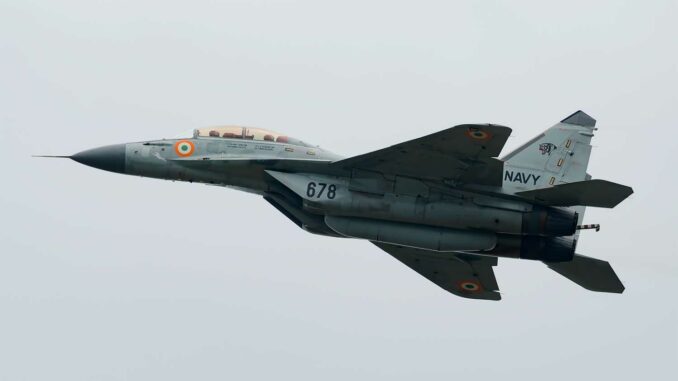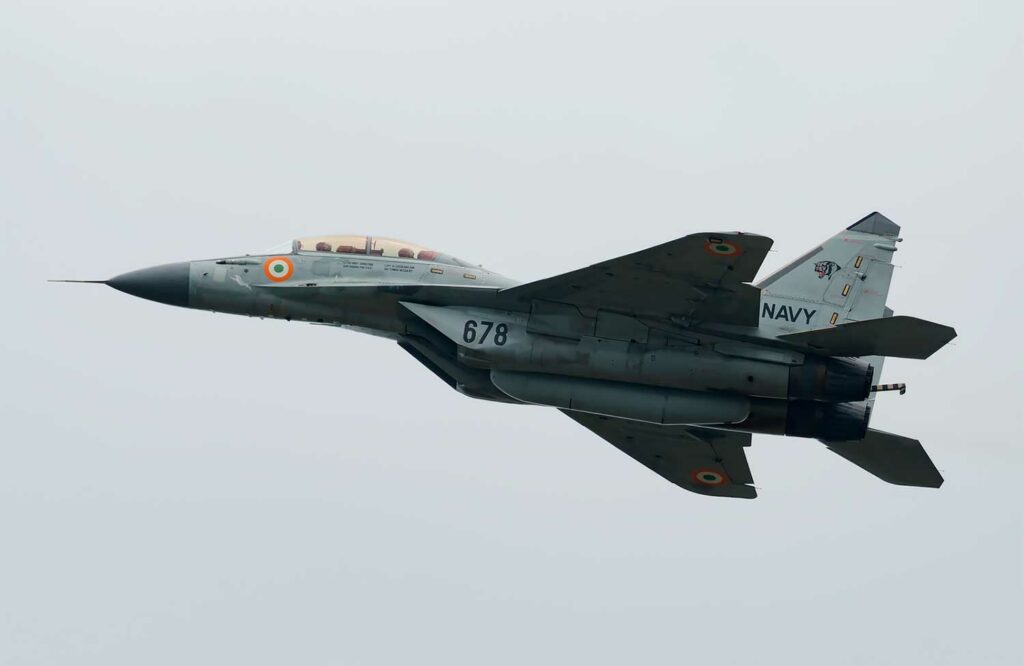
MiG-29 crash in India on July 28, 2025: two pilots killed, urgent need for air force modernization.
On July 28, 2025, an Indian Air Force MiG-29 crashed in the state of Uttar Pradesh during a routine training flight. Both pilots on board were killed. This accident comes at a time when the Indian military aviation has been relying on aircraft inherited from the Soviet era for several decades. The MiG-29, at the heart of India’s air defense system, has been the subject of growing criticism regarding its maintenance and technical reliability. This tragedy is drawing increased attention to the actual condition of the MiG-29 fleet in service, the frequency of incidents, and potential gaps in safety protocols. For aviation and defense experts, this is a strong signal that continued dependence on an aging platform requires immediate modernization.
Background to the accident
The MiG-29, designed by Mikoyan, entered service with the Indian Air Force in the late 1980s. By 2024, the IAF had lost 20 MiG-29 aircraft in flight, plus five navy aircraft according to official data. Prior to the accident on July 28, 2025, two major incidents occurred: on September 2, 2024, in Rajasthan, during a night training flight, where the pilot ejected safely after a technical problem; on November 4, 2024, near Agra (Uttar Pradesh), during a routine flight between Adampur (Punjab) and Agra, an aircraft suffered a flat spin before crashing, with no casualties as the pilot ejected.
The July 28 incident is notable for the loss of both pilots. According to initial official statements, the aircraft encountered a critical failure, making a return impossible. Both pilots reportedly attempted to redirect the aircraft to an unpopulated area before ejecting—too late. No official full report has yet been published. The exact location of the crash has not been disclosed, but the accident has been confirmed in a rural area of Uttar Pradesh similar to that of November 2024.
Recurring failures and technical maintenance
The frequency of incidents involving MiG-29s reveals structural flaws. The aircraft, some of which are over 30 years old, suffer from a high rate of hydraulic failures, flight control system malfunctions, and problems related to aging RD-33 turbojet engines. Between 1989 and 2024, the IAF ordered around 80 MiG-29 aircraft, a significant proportion of which require heavy maintenance.
The maintenance of these aircraft depends on long-standing agreements with Russia and the UPG (Upgradation Package) modernization programs initiated in the early 2010s, but delays in the delivery of critical components and inadequate local maintenance infrastructure limit responsiveness. Periodic inspections, normally every 400 flight hours, are not always carried out in accordance with the original requirements. The aging of the airframes is leading to unexpected structural cracks and human error during inspections.

Consequences for the IAF’s operational capability
The accident is increasing pressure on the IAF’s operational air force. In March 2025, a report mentioned that available squadrons were declining from 42 to around 30, and could fall to 28 in 2025-26, while India is targeting a minimum of 42 squadrons to ensure deterrence and national coverage. Repeated losses of MiG-29s directly affect air patrol, interception, and multinational exercise capabilities.
The loss of two pilots also represents a critical loss of operational skills. Training MiG-29 pilots is a long (several months), costly process that depends on procedures specific to the type. If the accident rate remains high, turnover is likely to slow down the ramp-up. The IAF’s image is suffering among international partners, particularly in the context of joint production (Aero India shows, etc.) and future foreign purchases.
Fleet modernization: what are the options?
Faced with this situation, several technical options are available. First, accelerating the UPG or MiG-29UP upgrade programs with modern avionics (AESA radars, IFF, Link-16 data link) could improve reliability. Second, the gradual replacement with 4th generation Made in India aircraft such as the HAL Tejas Mk II, or through the acquisition of Western fighters (F-16 Block 70, Rafale, Gripen E) would reduce dependence on Soviet platforms.
The estimated cost of a modernized MiG-29UP is around $25 to $30 million (approximately €23 to €28 million), compared to $80 to $100 million for a Rafale or a modern F-16 Block 70 (approximations according to recent sources). Investing in local maintenance infrastructure, strengthening heavy overhaul centers, and training specialized teams are essential.
In the long term, the IAF must achieve a 30% modernized fleet ratio, i.e., 80 to 100 new or heavily reconfigured aircraft, to maintain strategic credibility. Recent losses are likely to accelerate calls for tenders and budget decisions.
Political challenges and frank reflections
This accident highlights a major tension: India persists in operating an obsolete aircraft type in a geopolitical environment that demands air superiority. The decision to keep the MiG-29s in service for the long term is sometimes based on old contracts or a sense of perceived reliability. However, the regularity of incidents shows that conservative maintenance is no longer sufficient.
Voices within the defense sector believe that there is an urgent need to redefine air doctrine and prioritize newer platforms, even if this means temporarily reducing the total number of squadrons. The loss of human life is a clear warning that safety margins are now thin.
War Wings Daily is an independant magazine.